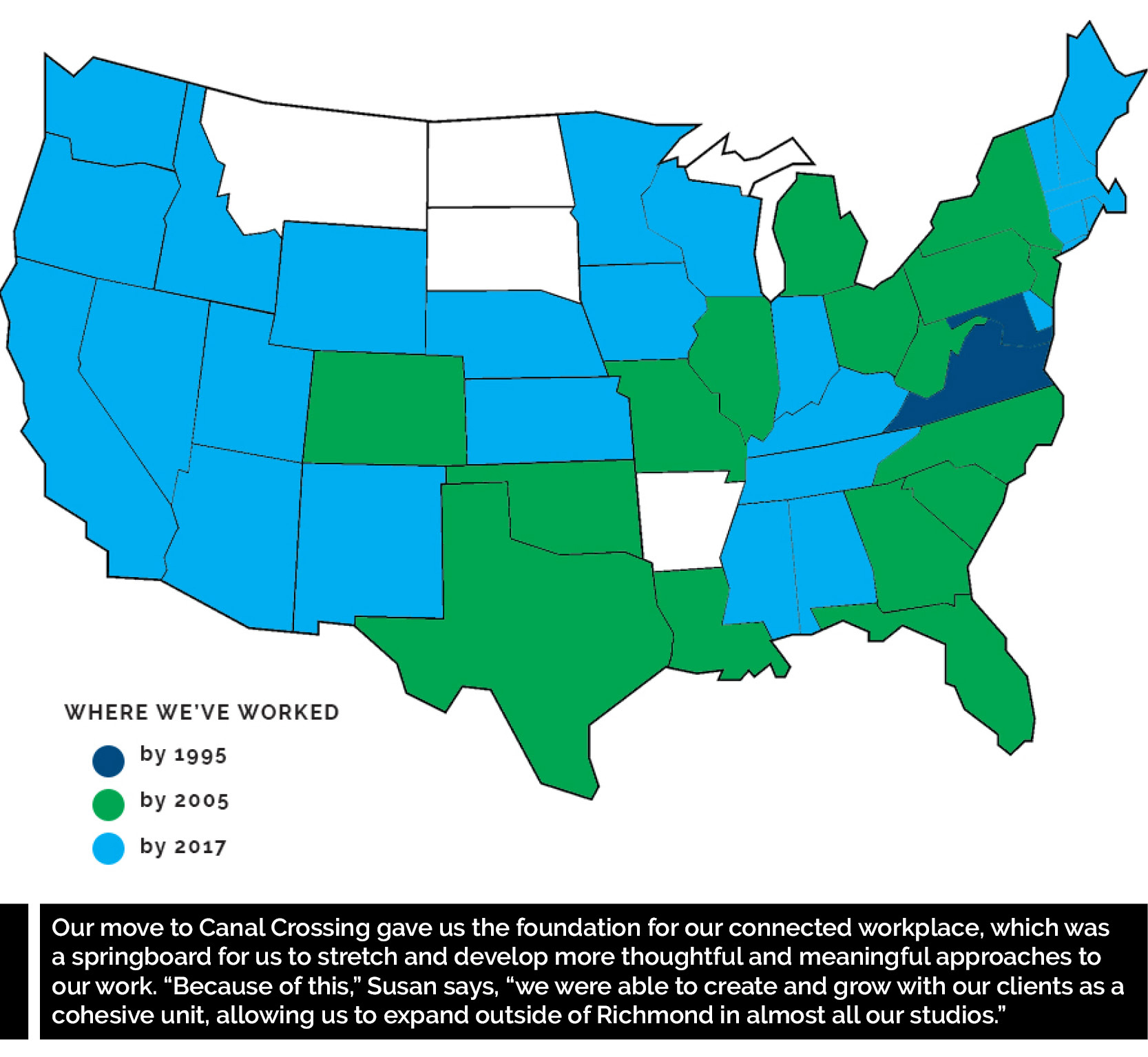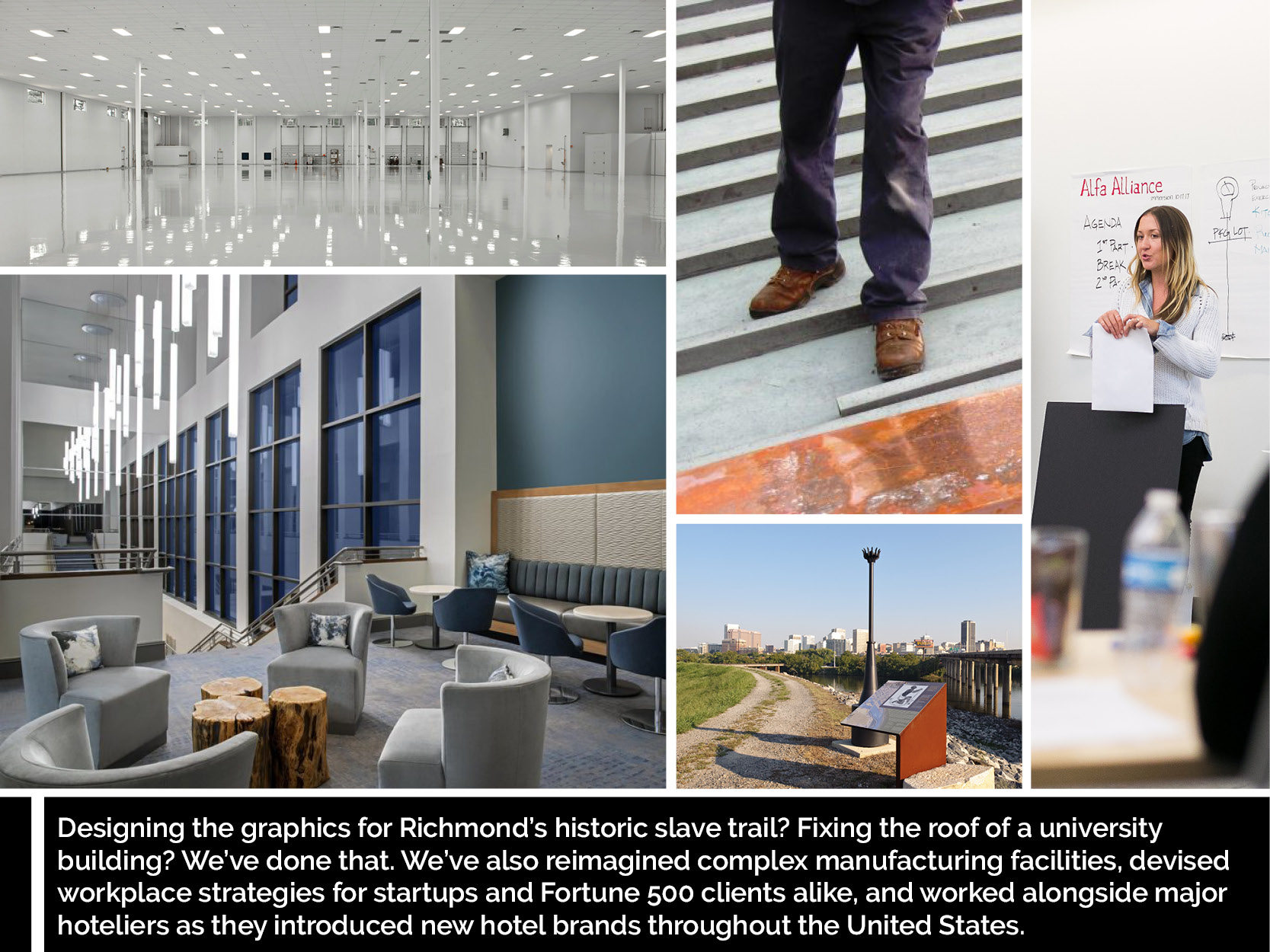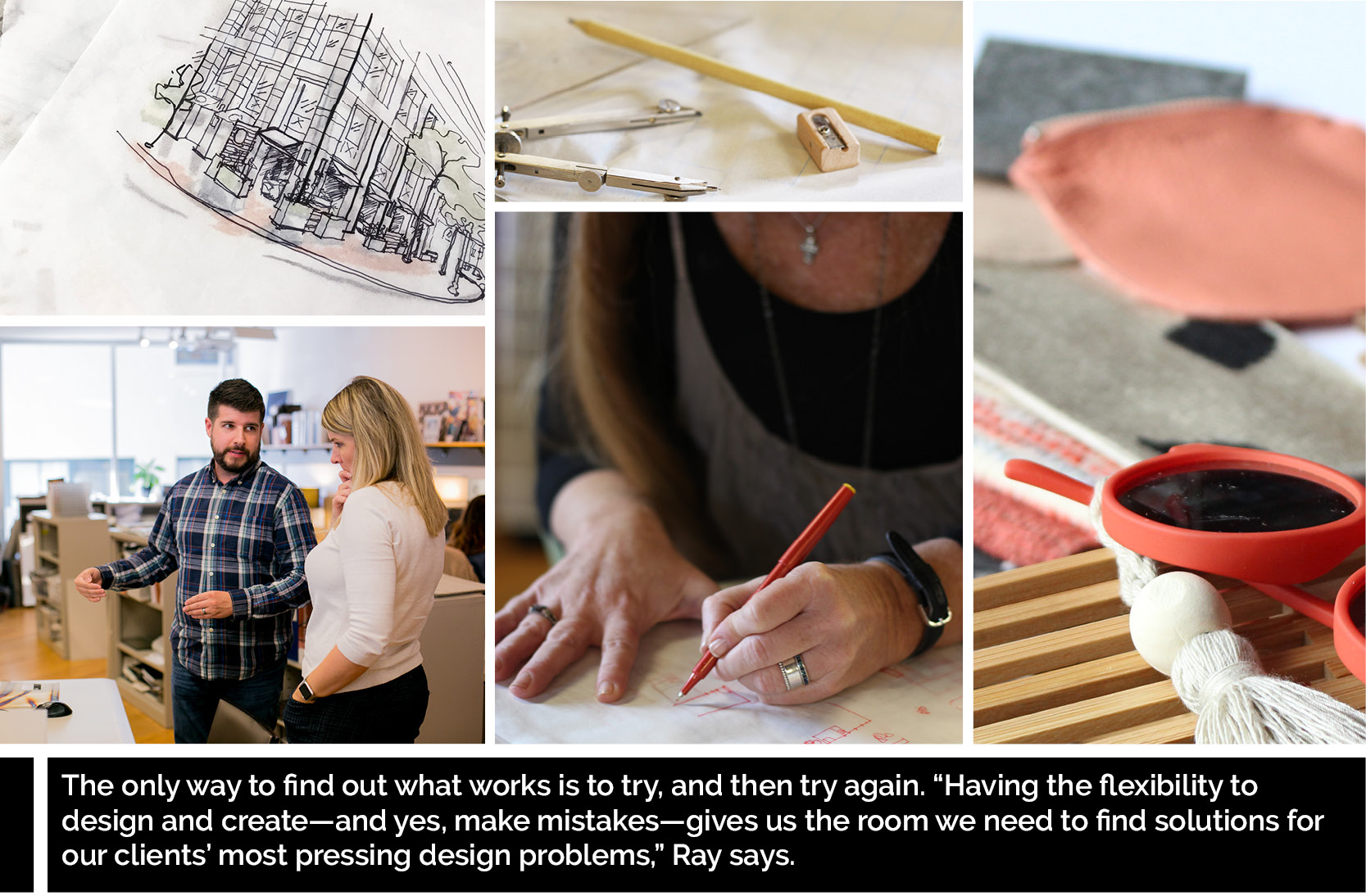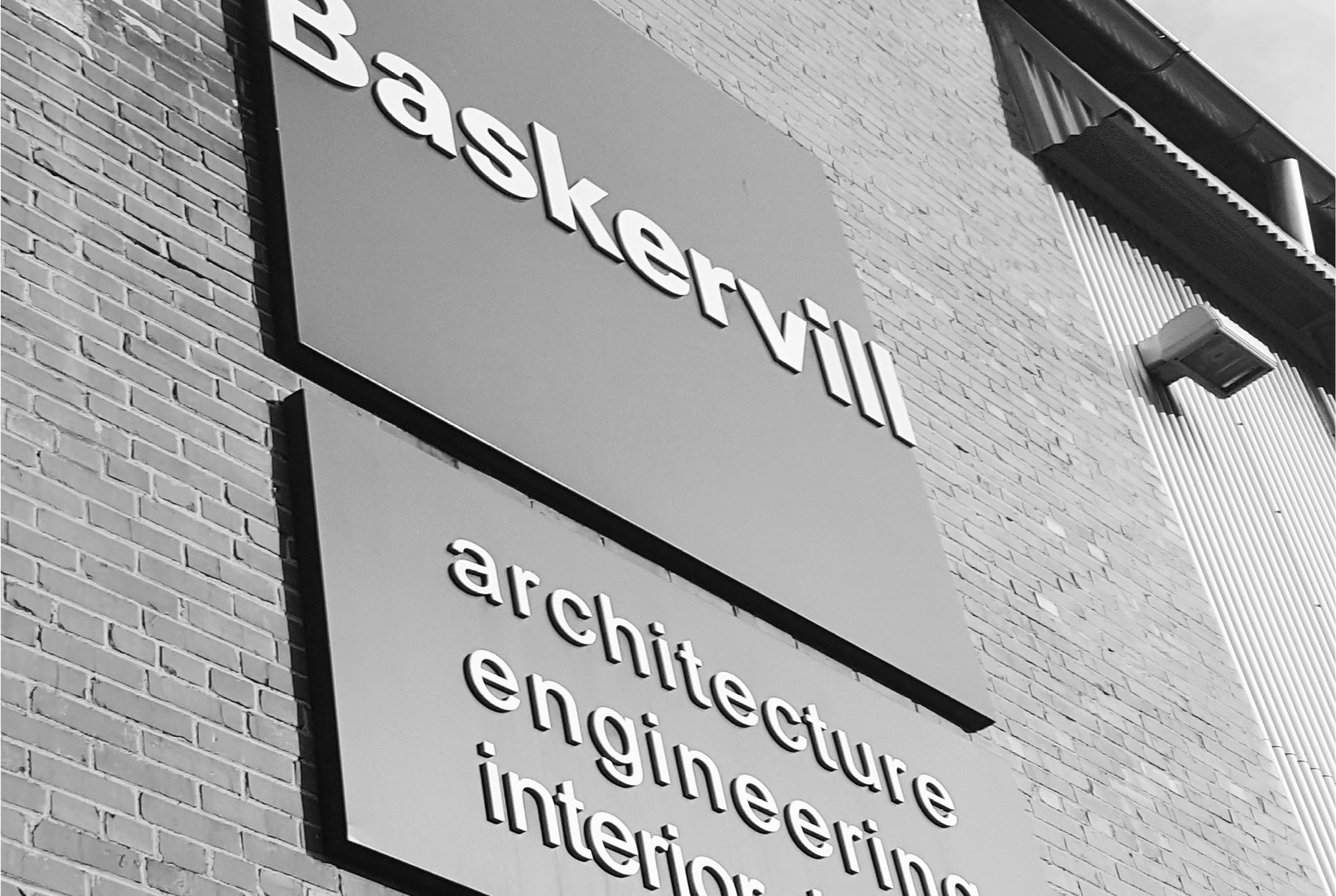In the midst of last year’s 120th anniversary celebration, we reminisced. How did we get where we are today? What was it that propelled us forward? The people, the projects, the passion—and maybe a little luck?
We don’t have all the answers, but we do have a few pearls of wisdom we’ve picked up along the way—insights we’ve rounded up and are sharing with you as a gesture of thanks for joining us on this journey. From the Baskervill leaders who’ve seen and shepherded our success first-hand, here are four quick lessons-learned to inspire your own 2018 initiatives.


In the late 1980s, after years on Cary Street, Baskervill set up shop across two floors of a 1870s warehouse-turned-apartment-complex-turned-office-space. There were two conference rooms, oddball lighting, and a particularly memorable eggplant purple table where people gathered. It was our imperfectly perfect home. We were groovin’ and growing—and suddenly, we reached a tipping point.
“After gobbling up two additional floors, literally tearing walls down to accommodate growth, we began to operate as individual studios on separate floors instead of as a cohesive company,” explains Principal and Director of Workplace Strategies Susan Orange, CID. Our space could no longer support what we wanted to achieve culturally—we were growing, but growing apart in the process.
“What we know and stress to our clients is that an interior space is first informed by the structure and shell of a building,” she says. “Dimensions, penetrations, and orientation all ultimately play into how the inside is planned out. The building footprint acts as a blueprint for your culture, and at a certain capacity, it can stop functioning as intended.”
That’s what happened for us. We moved beyond what a massive renovation or additional floors could offer, and we needed a new footprint. So in 2003—almost 20 years after we had moved in—we relocated to another old warehouse-turned-office-space just down the street: a space we still call home today. The difference here? No solid load-bearing walls limiting how we group people together; a single kitchen for gathering and creative collisions (the old office had one on each floor); and access to natural light and unique views to Richmond’s famed triple crossing and downtown. Here, our culture became more visible and inclusive, opening the door for future growth.
Today, we’re nearly 150-minds strong, designing in 44 states and four countries (including Jamaica and Canada) with more than 500 active projects across our three offices. The growth we’ve experienced after recalibrating our workspace is a prime example of why it’s important to monitor how your space is truly working for you, especially in the golden era of office reinvention.


Growth, in both number of projects and expansion to our bustling offices in Washington DC and Orlando, are all part of a purposeful, strategic vision for the future set by firm leaders over a decade ago. “The evolution of our clients’ brands in the last 20 years has allowed us to explore the possibilities for our own brand alongside them,” says Baskervill President Bob Clark, PE.
An engineer by training, Bob stepped into his current role in 2004. He was 35 years young and, like many business leaders, had no warning of the depth of the economic storm that would come in early 2008. “The recession was a major teaching moment for me,” Bob says. It was then he learned the importance of diversification and specialization. Both are crucial, he says.

“There’s a balance you’ve got to strike between having diversity in the type of work you do and also having depth of experience to balance out that breadth.” The key to making that happen? Fundamentally changing how we view leadership.
A single project’s success takes a team of leaders—nuts-and-bolts lovers (specifications, building codes, accounting); big thinkers (interdisciplinary teams of architects, interior designers, and MEP engineers); and expert communicators (client relations and project managers). No one person can manage all the moving parts quite like a host of leaders working together.
Brad Richards, AIA, a principal in our hospitality studio, couldn’t agree more. “Because we value all types of leadership at all levels, I’ve learned more about my own flaws and strengths—especially where I can direct, and when to ask for help,” he says. “This team mentality empowers our designers, and we’ve come to realize we prefer team accomplishment over individual achievement.”
Thoughtful staffing measures, he says, and cheering along all levels of our firm has allowed us to tap into what was once unrealized potential within our people. (Pizza goes a long way, too.)

Natural tinkerers eager to try new ideas, our designers aren’t that unlike mad scientists. We’ve relocated office mugs (Does the location matter if you’re trying to encourage spontaneous cross-pollination across departments?), made adjustments for more collaborative zones (If we get rid of desk pods, will it boost our team mentality?), and invested in virtual reality tools to simulate potential design solutions (What happens if we can show our clients their space in real time?)—all in the name of learning.
This means we often entertain rather unconventional design strategies. And with that comes some failure—but that’s all part of the plan.
We prefer failing fast and learning from our experiences instead of always playing it safe. Just ask Principal Ray Trevillian, AIA, who leads our manufacturing + logistics studio. “Our industrial clients are risk-takers, creating first-of-their-kind technologies and processes. That’s why we, as designers, can never settle; just any design won’t work in an ecosystem of unknowns and complexities. Our clients, across all of our studios, demand more from us—and we appreciate the challenge.”


“Baskervill is built on respect—making sound decisions and valuing each person,” says Hospitality Studio Principal, Terri Callaway, AIA. “This will never change.”
If there’s one key to growth and success, it’s to know your North Star. What defines, motivates, and drives your people and your company’s mission?
For us? It’s cross-pollination. We believe all of our design studios flourish and fuel one another in profound ways; that a lesson learned on a resort in Jamaica can benefit a workplace wellness initiative in Richmond or a sustainably-minded urban dwelling in Roanoke. So we commit ourselves every day to being collaborative designers who don’t work in a vacuum. Lines of communication between our teams never close, and trust remains at the forefront of our relationships, with each other and with our clients. Those are our telltale truths.
What are yours? And how are your physical spaces either helping or limiting those aspirations? We bet if you step back from the day-to-day and take a meaningful look at your big picture to find your North Star, you’ll lay the foundation for a long and successful future. That was our case. Of course, we had help along the way—sounding boards for questions and shoulders to lean on.
So if you need a partner in your journey, we’re here.


